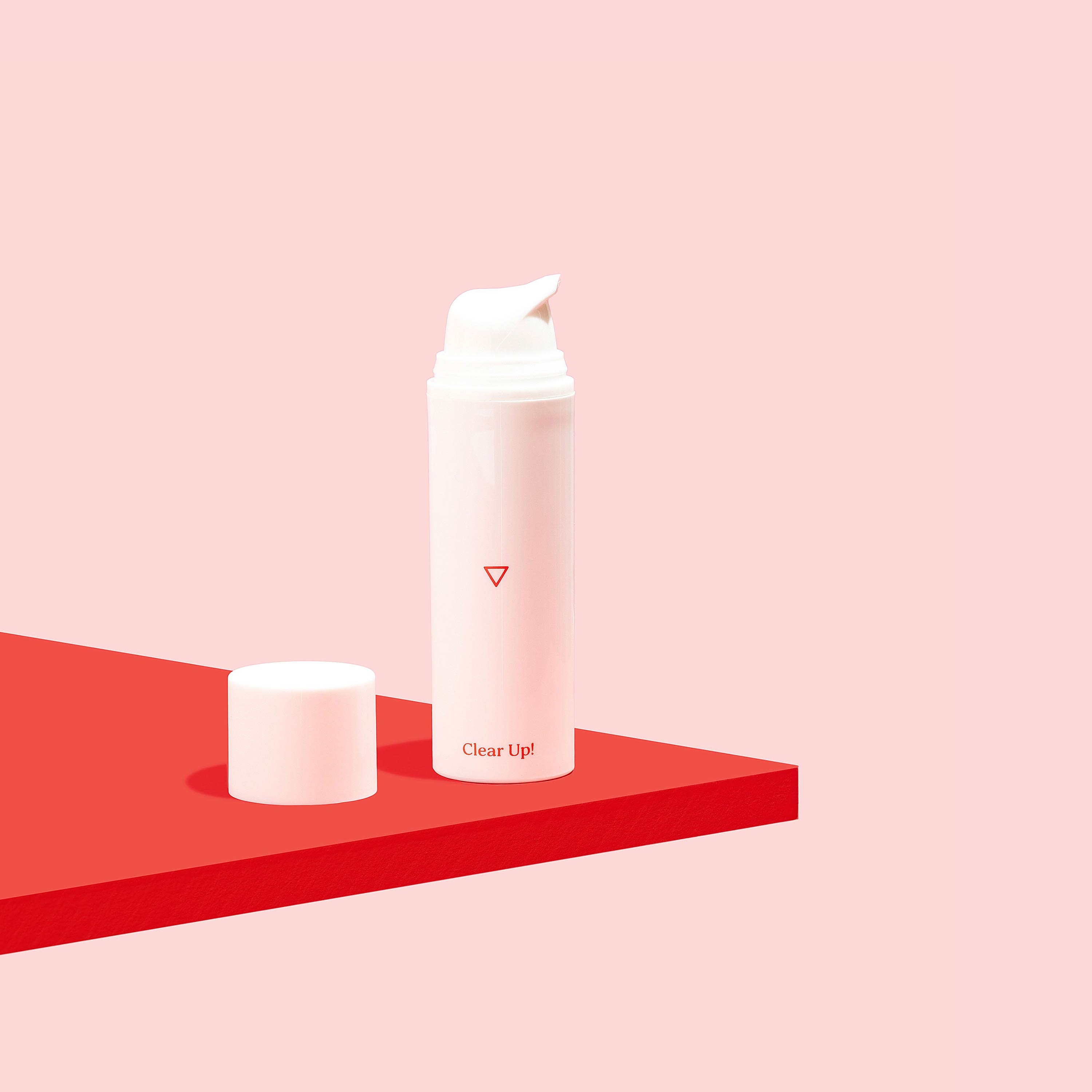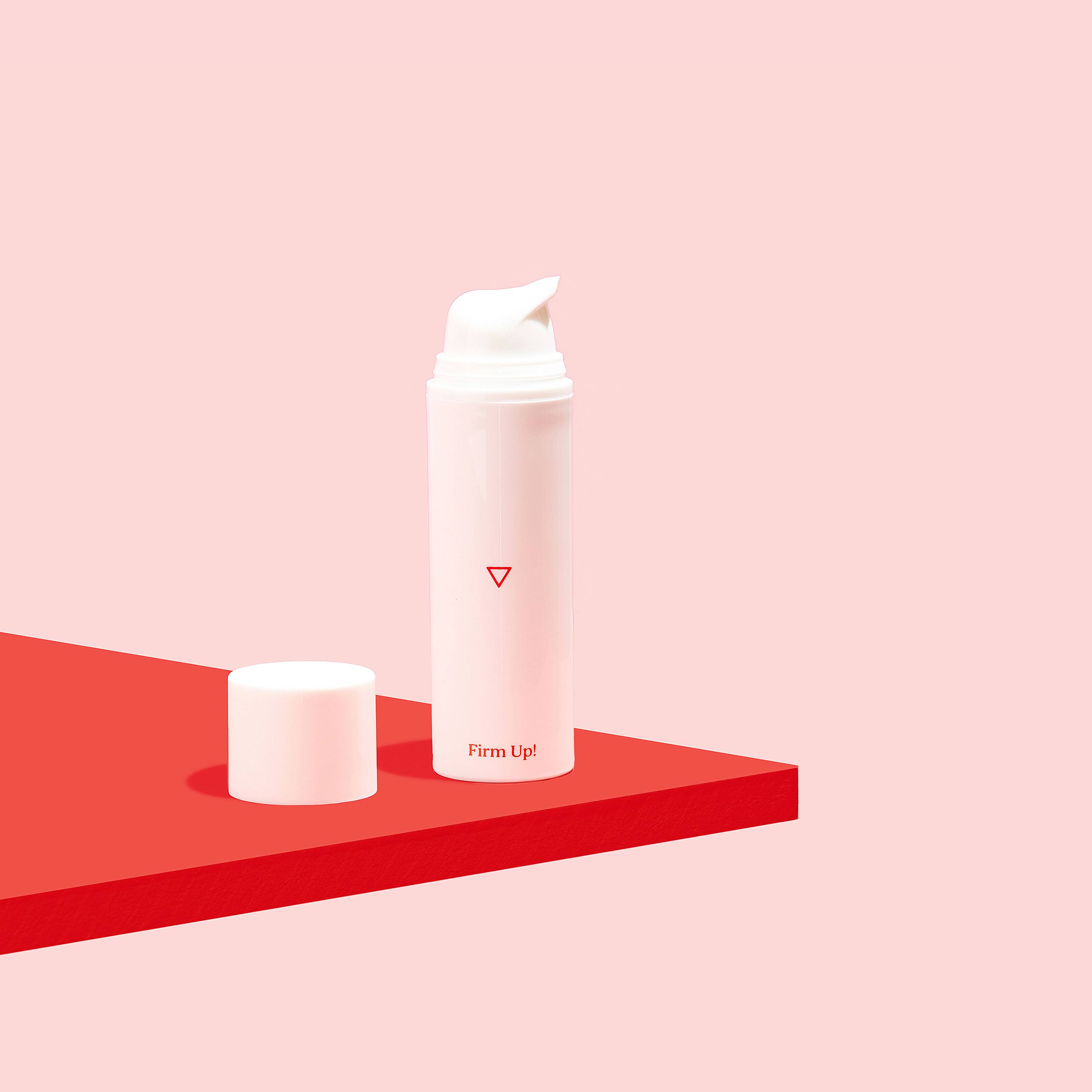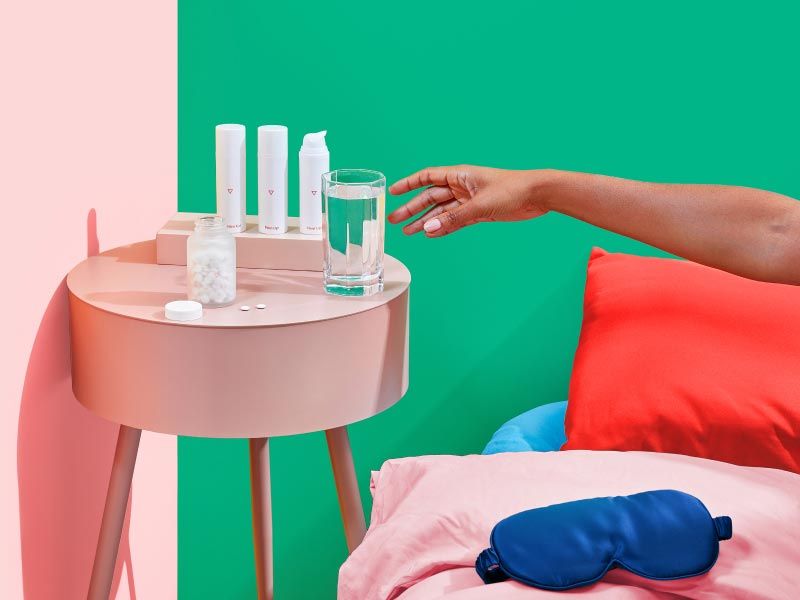
What Is Spironolactone?
Published on January 9, 2025
Updated on July 25, 2025
Written by Kathleen Morrison
Medically Reviewed by Andrea Sleeth WHNP-BC, MSCP
Spironolactone is a medication that’s tricky to pronounce—but figuring out what it’s used for is even trickier! This medication has become known for helping with certain symptoms of hormonal imbalance. But that’s not what it was originally used for. So, don’t be surprised if a quick Google search about spironolactone leaves you with a lot of questions!
Oral spironolactone was originally developed for conditions like high blood pressure and heart failure. So, how has it become a go-to option for treating hormonal acne and hair loss for women? We’re here to talk about just that. Read on as we discuss spironolactone for acne and hair loss, how this medication works, its potential side effects, and more.
Wisp treatment options are available only after consultation with a licensed medical professional. You should consult with your healthcare provider before starting a new supplement or treatment regimen. Individual results may vary.
What is spironolactone?
Spironolactone is a generic version of the medication Aldactone. It’s classified as a potassium-sparing diuretic, which means it helps the body get rid of excess water and salt while keeping potassium levels stable. Spironolactone is FDA-approved to help treat:
- High blood pressure
- Heart failure
- Fluid retention (edema)
One way that spironolactone helps treat these health conditions is by blocking a hormone called aldosterone. Blocking aldosterone creates knock-on effects in your body. Specifically, it lowers your androgen hormone levels—or “male hormone” levels like testosterone. Lowering your androgen levels is how spironolactone can help with acne, hair loss, and body hair growth or hirsutism. While we all have androgen hormones in different amounts, keeping your hormones balanced can help avoid these unwanted symptoms.
What is spironolactone used for?
Now that we know a bit more about how this medication works, let’s get clear on another common question: what is spironolactone used for, exactly?
Spironolactone is still used as a diuretic to help with blood pressure and heart conditions. But, it has expanded into off-label uses in dermatology and hormonal health for women. An off-label use is when a healthcare provider prescribes a medication for a purpose that hasn’t yet received FDA approval.
Common spironolactone uses for women include:
Hormones have a major say in how your body feels, functions, and looks—especially when they’re out of balance. Spironolactone is often prescribed to help manage symptoms tied to excess androgens (like testosterone), which can throw your skin, hair, and cycle off track. Here are some of the most common ways spironolactone is used to help women feel more in sync with their hormones.
- Hormonal acne: Hormonal acne is usually located around the jawline, cheeks, and chin. It’s often caused by too much sebum or oil production, which is often the result of high androgen hormone levels. Spironolactone has been used to combat the imbalance that causes this kind of acne.
- Hair loss: The hormonal changes associated with perimenopause and menopause can cause hair loss, while PCOS can cause hair loss or alopecia. Spironolactone has been used to help treat hair loss in women.
- Hirsutism: While high androgen levels may cause the hair on your head to thin, it can also cause your body hair to grow, called hirsutism. Spironolactone has been used in treating hirsutism.
- PCOS: If you have PCOS, you may be experiencing one or all three of the symptoms mentioned above. Spironolactone can help lower your androgen levels, which may help relieve these symptoms.
What is hormonal acne?
Ah, acne. It can be annoying, painful, and wayyy too hard to get rid of. And while many folks think it’s just a teenage thing, you can deal with acne at any age (unfortunately).
There are plenty of products out there that promise clear skin. Figuring out what works for your skin takes some patience, and possibly some trial and error. So, it can be helpful to know what’s causing your acne so you can treat it effectively.
Hormonal imbalance—specifically high androgen levels—is often the cause of acne in adult women. Characteristics of hormonal acne include:
- Acne on the jawline, lower cheeks, and side of the neck
- Deep and inflamed papules
- Tenderness of the affected area
If you’re dealing with acne and think your hormones are to blame, you might consider talking with a healthcare provider to see if spironolactone can help.
Spironolactone for acne
So, how does spironolactone for acne work? Well, hormonal acne happens when excess androgens trigger oil glands to produce more sebum—the oil on your skin. And when you have too much sebum, it can clog your pores and lead to breakouts.
Spironolactone works by blocking androgen receptors, which then reduces the amount of sebum your skin produces. And when your sebum production is under control? You can see improvements in your acne. In fact, one study showed that women who used 100-200mg of spironolactone daily saw their acne lesions improve by 50 to 100 percent!
Wondering how long it takes to see results? While you might notice less sebum and fewer breakouts within several weeks, it can take three months to a year to see results. As with all skincare, consistency and patience are key.
Spironolactone for hair loss
As your estrogen levels decrease during perimenopause and menopause, androgen hormones become more prominent. This change in hormone levels can cause the hair on your scalp to thin.
Luckily, spironolactone can help! How? By reducing sebum production and helping hair follicles maintain their size. Studies have looked at the effectiveness of spironolactone for hair loss and found that women experienced:
- Improved hair density
- Reduced hair loss
- No significant adverse effects
If you’re dealing with menopause-related hair loss, consider speaking with a healthcare provider to see if spironolactone can help.
Spironolactone side effects
Spironolactone is generally safe and well-tolerated. But, everyone reacts differently to medication, so it’s important to know what to watch out for! Spironolactone side effects can depend on the dose you’re taking and may deal with its anti-androgen effects.
Possible spironolactone side effects include:
- Irregular periods
- Breast tenderness
- Lower libido
- Dizziness
- Nausea
- Headache
- Excessive urination
- Fatigue
So, does spironolactone make you lose your period? Not necessarily, but it might make your cycle less predictable. An estimated 15 to 30 percent of women taking this medication experience irregular periods, making menstrual irregularity the most common spironolactone side effect.
If you’re concerned about menstrual irregularity while taking spironolactone, you may consider taking hormonal birth control pills to help manage your cycle. Spironolactone and most birth control pills can work well together, as they can both help to improve acne and PCOS symptoms.
The difference between spironolactone and other hormonal treatments
When it comes to treating hormonal acne, there’s no one-size-fits-all solution—but spironolactone is often a top pick, especially for people assigned female at birth. So how does it stack up against other hormonal treatments like birth control or oral isotretinoin?
Spironolactone works by blocking androgens—aka the hormones that trigger excess oil production and clogged pores. It doesn’t mess with your menstrual cycle the way some hormonal birth control methods might, which makes it a great option for folks who don’t want or need contraception but still want clearer skin.
Compared to oral isotretinoin (commonly known by the brand name Accutane), spironolactone tends to be much gentler and has fewer intense side effects. Isotretinoin is usually reserved for severe cystic acne and requires strict monitoring, while spironolactone can be a more flexible, long-term solution for moderate hormonal breakouts.
And if you're already using birth control, spironolactone can sometimes be combined with it for even better results—just make sure to chat with your provider first.
Bottom line? Spironolactone is a powerful option that targets hormonal acne at the source, without the heavy-duty side effects of other treatments. It’s all about finding what works best for your body and skin.
Can you take spironolactone and birth control together?
Short answer? Yep—you totally can. In fact, spironolactone and birth control are often prescribed together to help treat hormonal acne more effectively.
Spironolactone works by blocking androgens (those oil-triggering hormones behind a lot of hormonal breakouts), while birth control pills regulate hormone levels by suppressing ovulation. Together, they can tag-team those internal hormone shifts that cause stubborn breakouts, especially along the jawline, chin, and cheeks.
There’s an added bonus, too, since spironolactone can sometimes mess with your cycle (hello, irregular periods), being on the pill can help keep things a little more predictable. Some studies even show that using both spironolactone and hormonal birth control can lead to better acne-clearing results than using either one alone.
That said, this combo isn’t right for everyone. Your skin, your hormones, and your birth control needs are unique, so it’s always best to check in with a provider who gets your whole health picture.
Is spironolactone right for me?
Persistent acne, hair loss, and body hair growth probably aren’t the most welcome symptoms of hormonal imbalance. But, spironolactone is a powerful option with proven benefits for treating these pesky conditions! With the right guidance and treatment plan, spironolactone might be the solution you’ve been looking for.
And, now that you understand what spironolactone is used for, you might be wondering if this medication is right for you. Like always, the decision to start taking a new medication is personal! Talking with a healthcare provider can help you figure out if spironolactone is safe and appropriate for your unique situation. Ready to get started? Reach out to a Wisp provider to discuss your options today.
Frequently Asked Questions (FAQ):
Does spironolactone help with hormonal imbalance?
Yes! Spironolactone is often used to help with hormone imbalances caused by excess androgens (like testosterone). By lowering those hormone levels, it can help with symptoms like acne, hair loss, and unwanted hair growth, especially for people with conditions like PCOS.
What is the downside of spironolactone?
While spironolactone can be super helpful, it’s not for everyone. It can cause side effects like frequent urination, dizziness, breast tenderness, or irregular periods. Some people may need to monitor potassium levels, especially if they’re on other medications. It’s important to work with a provider to figure out if it’s the right fit for your body and your goals.
Is spironolactone used for hormone therapy?
Spironolactone isn’t hormone therapy in the traditional sense (like estrogen or progesterone replacement), but it is often part of hormone-related treatment plans. It works by blocking androgens, which makes it helpful for managing symptoms linked to hormone imbalances, especially in conditions like PCOS or hormonal acne.
What happens when a woman takes spironolactone?
When a woman takes spironolactone, it works as a diuretic and anti-androgen by reducing excess fluid and blocking male hormones like testosterone. This can help treat conditions such as hormonal acne, hair thinning (androgenic alopecia), or symptoms of PCOS.
How long does it take for spironolactone to work for hormones?
Patience is key! It can take around 2 to 3 months to start seeing noticeable changes, and up to 6 months for full results. Everyone’s body is different, but consistency and regular check-ins with your provider can help you get the most out of your treatment.
This blog post is for informational and educational purposes only and should not be taken as professional advice. Always consult with a qualified professional before making any decisions based on the information provided here.

Oral Spironolactone
Starting at $24
Prescription solution for women struggling with acne, hair loss, and excess facial hair.

Wisp Topical Spironolactone Prescription (Acne Treatment)
Starting at $39
Prescription hormonal acne solution, no pills required.

Clear Up! Prescription Acne Cream (Clindamycin + Retin A)
Starting at $75
Tretinoin 0.04%, Clindamycin 1.25%, Niacinamide 4% Prescription treatment for inflamed and stubborn acne.

Firm Up! Wrinkle Cream | Tretinoin (.04%)
Starting at $75
Tretinoin 0.04%, Azelaic Acid 5%, Niacinamide 4% Prescription treatment for wrinkles, fine lines, and other signs of aging.


